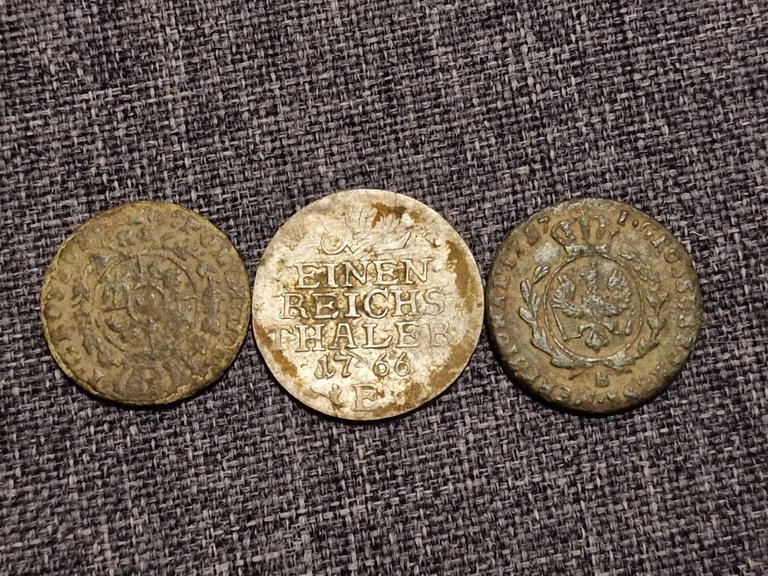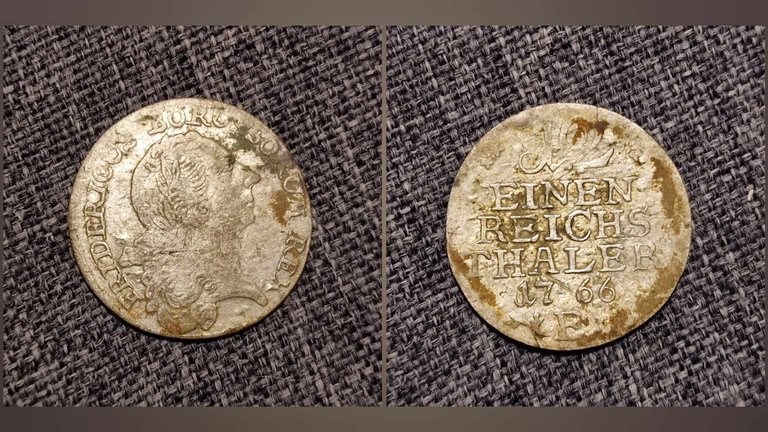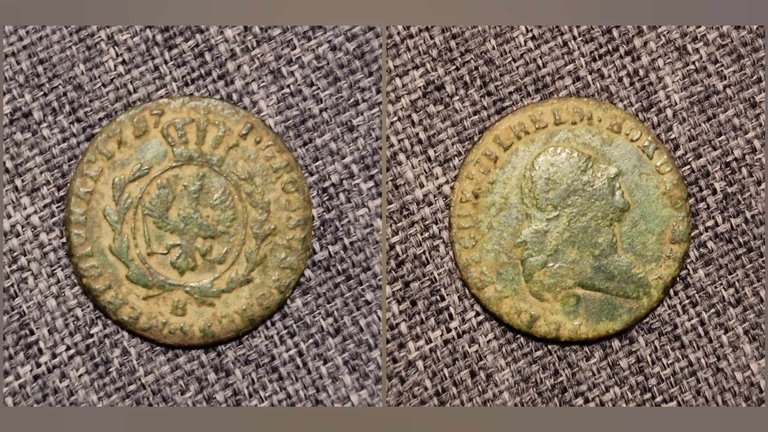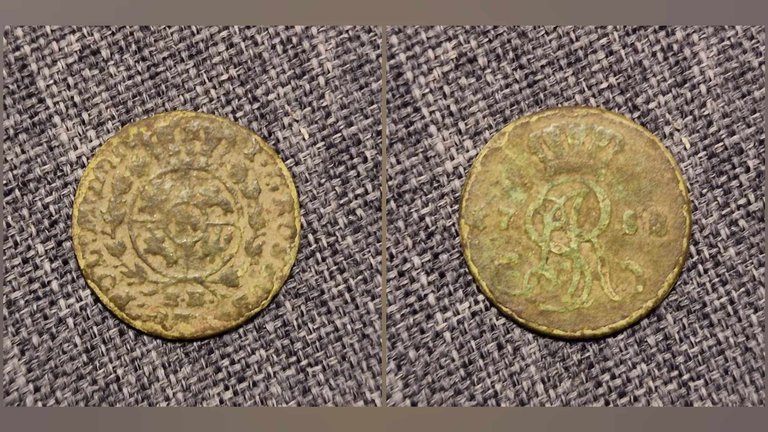Hey, I would like to share with you some new exhibits in my collection. If anyone hasn't read my posts, I will say that I have been interested in numismatics since a long time ago. I used to collect mainly coins of the German imperial period, but for some time now I have started to slowly add coins from other countries and other periods. Today, I will talk about my first coins from the 18th century, which were used to pay in the area I live in. I invite you.

Here we have 3 coins. One is German, the second is "German-Polish" and the third is Polish. I should add that I live in the area formerly known as East Prussia, now called Warmia and Masuria. I love this wild place. Returning to the subject, I will describe each coin briefly in turn.
1/12 REICHSTHALER 1766 E

This is a nice silver coin of 0.438 purity. It was struck during the reign of Frederick II, whose bust can be found on the obverse of the coin, there is also the inscription "FRIDERICUS BORUSSORUM REX", while on the reverse there is the denomination " 12 EINEN REICHS THALER". The numismat weighs 3.34 grams and its collector rarity, depends on the version. There are two "Narrow date" and "Wide date". The coin is very thin and makes a very pleasing sound when struck. The E mark indicates the mint in Königsberg.
1 Prussian penny 1797 B

The penny is made of copper and weighs 3.9 grams. The mint mark "B" indicates that it comes from the mint in Breslau. It was struck during the reign of Friedrich Wilhelm II, whose bust appears on the obverse, together with the inscription "FRIEDERICUS WILHELM. BORUSS. REX". The reverse of the numismat is very interesting here. It features a beautifully framed Prussian eagle. The coin was used in South Prussia, a province formed from the seized Polish territories.
1 Grosz 1788

The last numismatic coin is a Polish circulation coin, during the reign of Stanisław August Poniatowski, one of the worst rulers of Poland. It is made of copper and weighs 4 grams. On the obverse is the monogram of the ruler with a crown and the year of issue. On the reverse we find the sign of the Polish-Lithuanian Commonwealth and the inscription "I GROSSUS REG POL M D L". It is interesting to note that there were still versions with the inscription "GROSSUS Z MIEDZI KRAJOWEY", these are rare specimens.
Thank you for reading the entry. I hope to get my hands on even more coins to show off on the blog. I wish you a very happy time!
Polska Wersja
Hej, chciałbym się podzielić z wami nowymi eksponatami w mojej kolekcji. Jeśli ktoś nie czytał moich wpisów, to powiem, że numizmatyką interesują się od dawien dawna. Zbierałem głownie monety okresu cesarstwa niemieckiego, ale od jakiegoś czasu zacząłem powoli uzupełniać monety z innych państw oraz innych okresów. Dziś opowiem o moich pierwszych monetach z 18 wieku, którymi płacono na terenie, który to zamieszkuję. Zapraszam.

Mamy tu 3 monety. Jedna z nich jest niemiecka, druga jest "niemiecko-polska", a trzecia polska. Dodam, że zamieszkuję tereny wcześniej znane jako Prusy wschodnie, dziś nazywane Warmią i Mazurami. Kocham to dzikie miejsce. Wracając do tematu, każdą monetę opiszę po krótce z osobna.
1/12 REICHSTHALER 1766 E

Jest to miła dla oka srebrna monetka, próby 0.438. Została wybita za czasów panowania Fryderyka II, którego to popiersie znajduje się na awersie monety, znajdziemy tam również napis "FRIDERICUS BORUSSORUM REX", natomiast na rewersie znajduję się nominał " 12 EINEN REICHS THALER". Numizmat waży 3.34 grama i jego rzadkość kolekcjonerska, zależy od wersji. Są dwie "Wąska data" i "Szeroka data". Moneta jest bardzo cienka i wydaje bardzo miły dla ucha dźwięk przy odbiciu. Znak E oznacza mennicę w Królewcu.
1 Grosz Pruski 1797 B

Grosz wykonany jest z miedzi, waży 3,9 grama. Znak menniczy "B" wskazuje, iż pochodzi ona z mennicy we Wrocławiu. Została wybita za panowania Fryderyka Wilhelma II, którego to popiersie znajduje się na awersie, wraz z napisem "FRIEDERICUS WILHELM. BORUSS. REX". Rewers numizmatu jest tu bardzo ciekawy. Znajduje się tam pięknie oprawiony orzeł pruski. Moneta miała zastosowanie w Prusach Południowych, czyli prowincji utworzonej z zagarniętych terenów polskich.
1 Grosz 1788

Ostatni numizmat jest polską monetą obiegową, za czasów panowania Stanisława Augusta Poniatowskiego, czyli jednego z najgorszych władców Polski. Jest wykonana z miedzi i waży 4 gramy. Na Awersie znajduje się monogram władcy z koroną oraz rok wybicia. Na rewersie znajdziemy znak Rzeczpospolitej Obojga Narodów oraz napis "I GROSSUS REG POL M D L". Przytoczę tu ciekawostkę, że istniały jeszcze wersje z napisem "GROSZ Z MIEDZI KRAJOWEY", są to rzadkie okazy.
Dziękuję za przeczytanie wpisu. Mam nadzieję, że w moje rączki wpadnie jeszcze więcej monet, którymi będę mógł się pochwalić na blogu. Miłego czasu wam życzę!